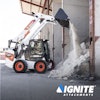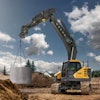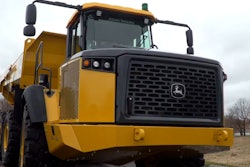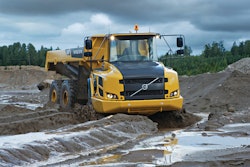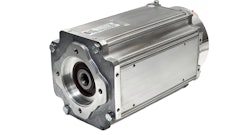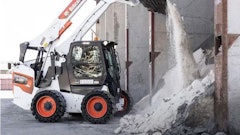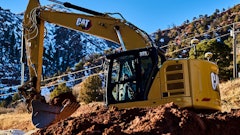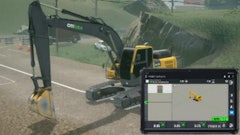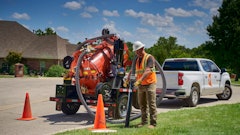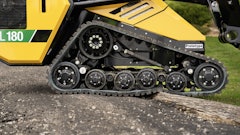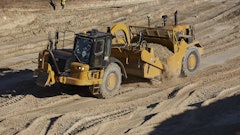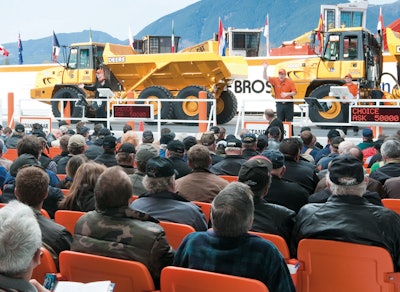
With all of the latest technology, should you purchase a new articulated truck? Or does it make more sense to buy a used unit in the current market? The answer is probably different for every contractor.
Evaluating the condition of a used articulated truck is not an easy task. “An articulated truck is one of the more difficult machines to evaluate just because it is a component-rich environment,” says Keith Oelfke, used equipment manager, Ziegler Caterpillar. “A dealer has to take a lot of things into the equation in order to come up with a comprehensive report – the repair history, oil sampling, who owned it, what it ran in.” When you are willing to spend this much money the cost of an inspection report really becomes an insignificant cost.
Focus your attention on the powertrain.“ That is where most of high failure rate components are located,” says Oelfke. There are three differentials, six final drives. There is a retarder/converter, a planetary transmission which has a large transfer case, and a splitter box. “For any piece of heavy equipment, that is a lot of components. Then you incorporate an electronic control system and a hydraulic system. So there is a lot to it.”
When you first approach the truck, establish the machine’s serial number and the hours. “Then start the machine and let it warm up as you look for physical damage,” says Oelfke. Look for leaks. Spend a little time on each individual component within the time that it takes to warm up. Then you can do your performance checks.”
If you can, place the truck in a high lug situation going uphill, and make sure it is still shifting properly. “With a full box you can establish that pretty quickly,” says Oelfke. “The engine usually gives away a fuel problem by a miss, significant lug or high smoke.
Pay close attention to high-hour machines. “The higher the hours the more chance there is for a component needing to be rebuilt or to need service,” says Oelfke. “Most articulated trucks have a lifespan ranging from approximately 9,000 to 15,000 hours, depending upon the level of service. That would be component lifespan. The frame lifespan could be double. Chances are you will repair or replace some piece on the powertrain within that 9,000 to 15,000 hours.”
Olive reports that customers at auctions are buying based on hours. “Less than 5,000 hours is considered low hours these days,” he says. “Somewhere between 10,000 and 20,000 hours is when many components start to show some wear and tear. The remaining life of your components lessens quite a bit over 10,000 hours.”
Try to determine when major components were replaced. “Establishing component hours is something that is significant on a higher hour machine,” says Oelfke. Those are usually different than the machine hours. For example, a differential may have been replaced at 8,000 hours while the machine has accumulated 11,000 hours. “You only have 3,000 hours on that differential. It becomes a part you don’t have to worry about as much.”
Take a look at box lining wear. “The box itself usually has a skin on the inside,” explains Oelfke. “Sometimes they are even lined with a Teflon lining so sticky materials slide out. If a used machine is half full of dirt that has just been dumped, then something is sticking. Before you buy the truck, make sure there is not something torn up that is creating that buildup. If the box needs to be relined, the cost can be pretty significant. You are talking about another $15,000 to $16,000.”
The presence of sideboards should be a warning sign the truck may have been overloaded “So if sideboards are present, make sure you are asking about the last application,” says Doug Olive, vice president of pricing and evaluations, Ritchie Bros. “Make sure they were working in a light material application versus clay or something like that.”
Then there are the hinge pins. “That is where the box pivots in the back,” says Oelfke. “Because they are used every dump, they need bearing replacement at a lot higher rate, every several thousand hours.” To check this have an assistant raise the box while you watch. You may notice movement when the box raises all the way and stops, or when it comes all the way down and stops. Any play is too much as it tends to develop more rapidly once it is present.
Examine the tires. “There are six of them and they do catch a lot of side wear because they usually operate in deeper mud and dirt,” says Oelfke. Pay attention to the deeper cuts before they become worse. “Today’s technology, you can have those side patches repaired unless they are down by the bead.”
Olive advises that you make sure the tires have been well maintained and that they are properly matched. Beware of trucks with mismatched bias-ply and radial tires.
Hitches typically last a long time, but you still need to carefully asses the condition prior to purchase. “There is no reason a well-maintained hitch should not last 10,000 or 12,000 hours,” says Oelfke. But the cost to repair a worn hitch can add up. “The repair itself can be in excess of $15,000 up to $20,000. There are two parts to it. There is the articulating part and then there is the oscillating part. When the oscillation hitch wears out it is going to need some significant build up. As long as you have it out, most guys go through the articulated side as well, which is pins and bushings.”
It is pretty expensive to repair because you have to split the truck. “So your hours and labor go up very quickly when it comes to either replacing the joints or line boring that center joint,” says Olive.
There are different methods to spot play in the hitch. “To see hitch play lift up the box, back it up and then hit the brakes,” says Oelfke. “Or back it up against a block and it will make the center flex.”
Another method is to get in the cab and turn the steering wheel from side to side while an assistant observes from a safe distance. “You will see play in either your steering cylinders or the center articulation joint,” says Olive. “It is difficult to see.”
Perform a walk around the frame. “These frames are box welded,” notes Olive. “They are built for an extreme application. If there are cracks in the frame, it has really been put to the test.”
“Although the potential exists for frame failures, it is very uncommon in today’s articulated trucks because of their design and manufacturing quality,” says Ken Emmett, product manager, Terex Construction Americas. “If a truck’s suspension is damaged, the truck may have been overloaded and the frame may have suffered. When inspecting the frame for failures, look at suspension mounting points on the frame.”
Ensure that the retarder is functioning properly. “Typically any truck built in the last 15 years has a retarder,” notes Olive. “If the retarder has not been working and the operator has just been using the service brakes then you probably have excessive wear on the brakes.
Documentation and research
“Maintenance records are worth their weight in gold on any asset such as this,” says Olive. “The more component history based on the reports, the better feeling you are going to have on sale day buying that truck at unreserved auction.”
Do your research. “Check the maintenance records,” says Olive. “Get a feeling for the work environment the truck came from. Are the trucks coming from a contractor with a good reputation? Are they coming from a distressed situation or are they coming from a contractor who is updating his fleet? That bears a lot of weight in your decision.”
Go with your gut. “When performing a visual inspection, your first feeling is your best feeling,” notes Olive. Check for obvious signs of neglect like broken glass in the cab, broken mirrors etc. Tilt the hood and take a careful look. “Does it look like the air filter or oil filters have been changed recently? Are there pre-determined installation or removal dates stamped on those filters?” Make sure the fluid levels are at the proper levels.
Also check comparable prices and understand the current market value. Companies such as Ritchie Brothers post the results of their auctions along with machine descriptions. This can be a good indicator of the current market value.
Dealer assistance
A dealer technician can prove a valuable asset. “A field service technician is going to be equipped with all of the necessary tooling to take pressures on a transmission, to plug into an engine (ECM), to perform cut out tests and gauge fuel system strength, overall transmission strength and hydraulic pressure.
Being able to plug into the engine ECM is a distinct advantage. “Establishing the hours is becoming more difficult because you are seeing more machines without mechanical meters,” says Oelfke. “If there was an ECM replacement, those hours may not have been registered in the new ECM. As a dealer, if it is a Cat machine, a lot of times we can establish that.”
Be sure to ask if any recent inspections have been performed. “We run everything that we trade through a shop,” says Oelfke. “We can potentially catch anything that is coming up so the customer isn’t surprised. We don’t want him to feel like he isn’t getting what he purchased.”


